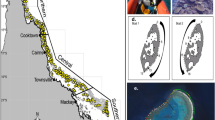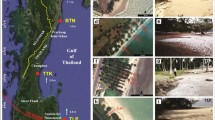Abstract
Beach erosion on Cinnamon Bay in the U.S. Virgin Islands results from storm waves in the North Atlantic. The net trend of erosion, however, is due to local environmental degradation. Reef die-back, initiated during the period of high sedimentation associated with 18th and 19th century sugar cane cropping, has reduced the rate of generation of new coral sands. Sand losses to deep water during periods of storm waves are not replenished. Engineering measures designed to check erosion at Cinnamon Bay have had little effect in this environment of low wave energies, but sand deficiency. The appropriate environmental focus for management of reef-beach systems is reef health and thus, water quality.
Similar content being viewed by others
Literature cited
Dolan, R., and J. Ferm. 1966. Swash processes and beach characteristics. Professional Geographer 17 (4): 210–213.
Waddell, Evans. 1973. Dynamics of swash and its implication to beach responses. Coastal Studies Institute Technical Report No. 39. Louisiana State University. Baton Rouge, Louisiana. 139 pp.
Author information
Authors and Affiliations
Rights and permissions
About this article
Cite this article
Hayden, B.P., Dolan, R., Hoffman, S. et al. Shoreline erosion in a reef-beach system. Environmental Management 2, 209–218 (1978). https://doi.org/10.1007/BF01866549
Issue Date:
DOI: https://doi.org/10.1007/BF01866549




